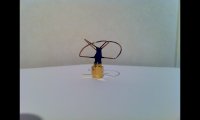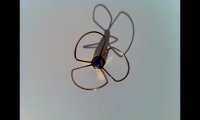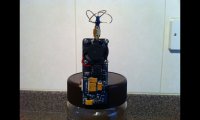ZAxis
Member
We have an important project coming up and our video downlink is being problematical. It is impossible to maintain the link 100% of the time.
The performance of the whole package, Mini ccd camera/Mondo Stinger 500mW Tx/Yellow Jacket Passport diversity Rx / one rubber duck-one patch antenna / Liliput 7" field monitor, has been perfect off the Hexa (MK electronics). We had it transmit a link from a moving cable car over 2Km from the bottom to over the top of a Scottish mountain. Fly it on the Hexa and it starts dropping out almost immediately. It doesn't seem related to the transmission distance but possibly to the weather conditions. Flying in heavy mist recently saw a really high dropout rate, however nice sunny days don't mean no dropping out.
The Tx is strapped to one leg of the Hexa and has its aerial pointing straight down. We've tried the aerial horizontal, hung from the bottom of the leg and repeated it using a 100mW Tx. At the Rx we've had 2 rubber duck aerials, both vertical, both horizontal, one each direction, one rubber duck + patch.
Is our experience typical or we doing something wrong ?
andy
The performance of the whole package, Mini ccd camera/Mondo Stinger 500mW Tx/Yellow Jacket Passport diversity Rx / one rubber duck-one patch antenna / Liliput 7" field monitor, has been perfect off the Hexa (MK electronics). We had it transmit a link from a moving cable car over 2Km from the bottom to over the top of a Scottish mountain. Fly it on the Hexa and it starts dropping out almost immediately. It doesn't seem related to the transmission distance but possibly to the weather conditions. Flying in heavy mist recently saw a really high dropout rate, however nice sunny days don't mean no dropping out.
The Tx is strapped to one leg of the Hexa and has its aerial pointing straight down. We've tried the aerial horizontal, hung from the bottom of the leg and repeated it using a 100mW Tx. At the Rx we've had 2 rubber duck aerials, both vertical, both horizontal, one each direction, one rubber duck + patch.
Is our experience typical or we doing something wrong ?
andy



